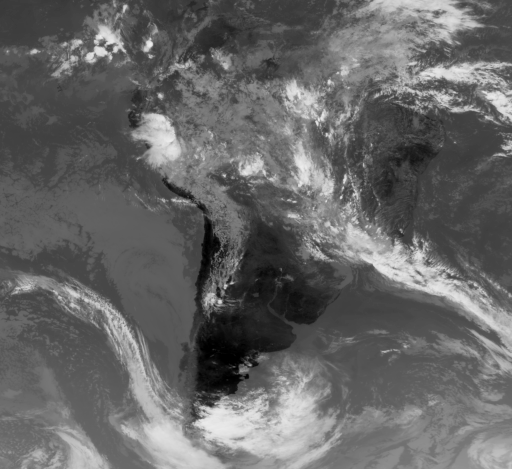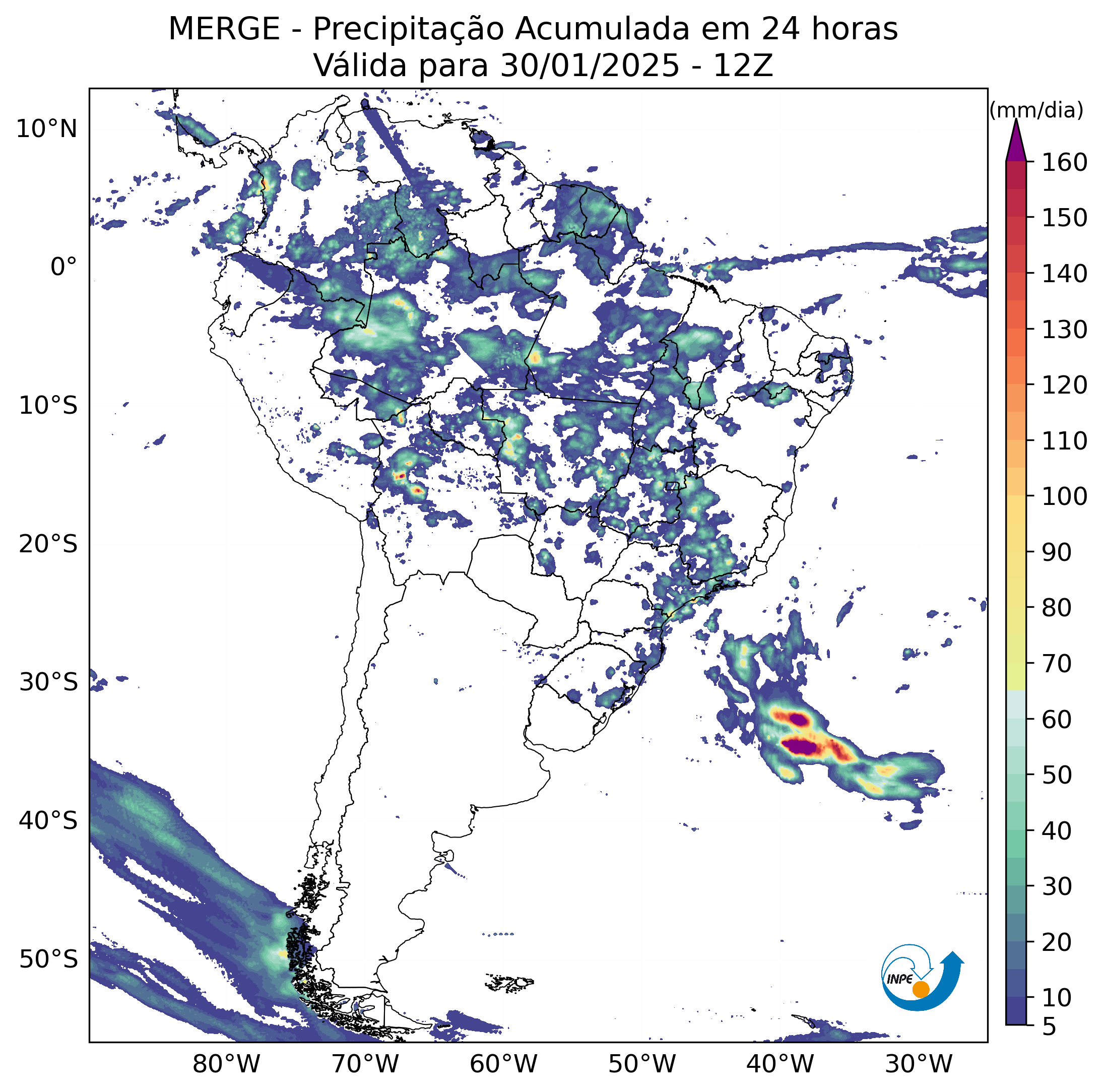Binary
Type of resources
Topics
Provided by
Formats
Representation types
Update frequencies
status
-
Satellite precipitation estimates combined with surface observations over South America. Satellite estimates for the first few hours are provided by the GPM-Early product. This dataset is provided in GRIB2 data format (https://www.nco.ncep.noaa.gov/pmb/docs/grib2/grib2_doc/).
-

GOES-13 is a satellite of the Geostationary Operational Environmental Satellite (GOES) series operated by the National Oceanic and Atmospheric Administration (NOAA). Launched on May 24, 2006, it is designed to monitor weather conditions in North America, South America, and the Atlantic Ocean region. It operates in a geostationary orbit, meaning it remains fixed relative to Earth, continuously monitoring a specific region of the planet. In 2017, it was replaced by GOES-16 (GOES-East) as the primary operational weather satellite for the United States. Since then, it has been placed in a backup position. GOES-13/Imager instrument captures 1 visible and 4 infrared channels at resolutions of 1km (VIS) and 4km (IR). The collection captures product files into individual STAC Items for each observation from the GOES-13 satellite. It contains binary files in a grid format for each of the 5 spectral bands. The files are encoded using int16 and represent a matrix of values (reflectance for VIS and brightness temperature for IR) with 1714 lines and 1870 columns. Note: The values must be read as a one-dimensional array and then converted in memory to a two-dimensional m x n matrix. These versions are generated by INPE using the process of mapping data from the original geostationary projection to a uniform space-time geographic grid (EPSG:4326) with 0.04 degrees spatial resolution. The geographical area used in the remapping process was chosen because it covers and highlights Brazil, South and Central America. The image reprojection operation is performed using the gdalwarp utility (https://gdal.org/programs/gdalwarp.html) with the nearest neighbor resampling strategy defined.
-

Satellite precipitation estimates combined with surface observations over South America. Satellite estimates for the first few hours are provided by the GPM-Early product; more than 12 hours back, GPM-late data are used. This dataset is provided in GRIB2 data format (https://www.nco.ncep.noaa.gov/pmb/docs/grib2/grib2_doc/).
 BIG Catalogue
BIG Catalogue